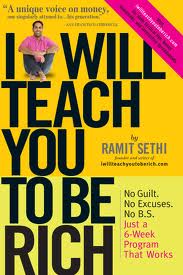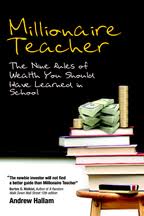Every month, I get dozens of emails asking me how to get started in investing or in personal finance in general. Check it out:
First of all, I think it’s awesome that young people are stepping up and doing something about their personal finances, even if it’s just taking that first step to ask someone else where they should start.
The trouble is, the personal finance world is one murky, confusing, crap-filled cesspool. Everywhere you look, there are hucksters waiting to scam you, overenthusiastic insurance agents financial planners trying to sell you policies that aren’t right for you, and sleazy forex salesmen promising you “high-speed wealth!!!”
It’s hard to cut through the crap in order to find the truly useful stuff.
So today, I’m going to show you two steps you can take to help you get started:
Step 1: Read It
Start off by reading a basic, easy-to-understand, personal finance book for beginners (I know what you’re thinking: Books?! WTF? I didn’t know those things still exist). Blogs and online articles are alright for quick facts, but there’s really no other medium that explains a subject as comprehensively as a book. Some poor starving author took years to research, organize and write out his ideas out, and you can get all of that effort and research for around twenty bucks. Now that’s true value.
But like I said earlier, it’s hard to cut through the crap to find a book that’s truly useful. You’re looking for a beginner’s personal finance book that will cover all basic aspects of personal finance: saving, spending, and investing.
Ignore the following types of books:
After you’ve successfully ignored all the irrelevant books out there, you’d be left with small pool of true blue personal finance books. Most of them are great, but two that I’ve found to be excellent for beginners are I Will Teach You To Be Rich by Ramit Sethi and Millionaire Teacher by Andrew Hallam. While you can probably find both at your local library, I’ve found it more useful to purchase my own copies so I can keep referring back to them.
Step 2: Singaporeanize it
Most of these books will be written for an overseas audience. For example, I Will Teach You To Be Rich is written for an Americans, so they’ll be terms like 401(k) or Roth IRA that don’t really apply to Singapore.
As you go through the book, try to figure out which parts you can Singaporeanize and apply to your life. The goal here is to get the author’s general framework, and then see if you can adapt it to suit your life.
It’s really not as hard as you think. For example, Millionaire Teacher talks a lot about passive investing by buying ETFs. So your task is now reframed from “How do I start investing?” (too general) to “How do I find out more about ETFs in Singapore?” (way more actionable)
That’s where Google comes in.
There are a couple of great resources you can trawl through to figure out how you can localize the ‘action items’ (gawd, I hate that phrase) you’ve read about. MoneySense (an MAS website) will give you the textbook, politically-correct answer for most aspects of personal finance, while local personal finance blogs like MoneySmart will give you their honest (and sometimes hilarious) opinions on various topics. Check both out to understand both sides of the coin.
To save you some trouble, here are the answers to some of the most common questions I usually get:
- What are ETFs?
- Which broker do you use?
- Which bank account do you use?
- Is it a good idea to buy insurance?
- So how’s life treating you?
PS: For more tips on how to conduct more robust investment research, you can also check out this previous blogpost I did.
Step 3: Execute It
Information alone isn’t enough. Smokers know the health risks of smoking, and obese people know they have to exercise more. Yet many of them don’t bother changing their lifestyles even though all the information they need is right in front of them.
Why? Because the hardest part is the execution.
Personal finance is about acting on the information you get, and then sticking to the plan once you’ve started. Too many people sit for years just digesting information and never doing anything about it. Others start enthusiastically on a certain investment, only to bail out in panic once they see a couple of losses. Both groups of people had the correct information, but failed at the execution.
In other words, personal finance is about behavior.
That’s where this blog comes in. I deliberately avoided making cheerfulegg purely about personal finance knowledge, because you can easily find all the info you need out there in books and other blogs.
Instead, I focus on the execution and write about the exact psychological and tactical strategies that can help you to save/spend/invest more effectively. Once you’ve gained all the knowledge you can get from books and online articles, this blog aims to help you implement that shizz, and then take it to the next level.
Nothing would make me happier than to hear that you have used some of my material to improve your life. If this blogpost helped you to get started or if I missed something out, let me know by leaving a comment below or sending me an email. I read every one.







mm excellent!
Have started a POSB MySavings account for instant automatic savings. And I’m relooking my credit card options. Hehe. Thanks for all the info!
That’s awesome to hear! You’re very welcome and good luck
I own a copy of both books.. was excited to hear that a fellow Singaporean reads IWTYT too!
^5 hahaha